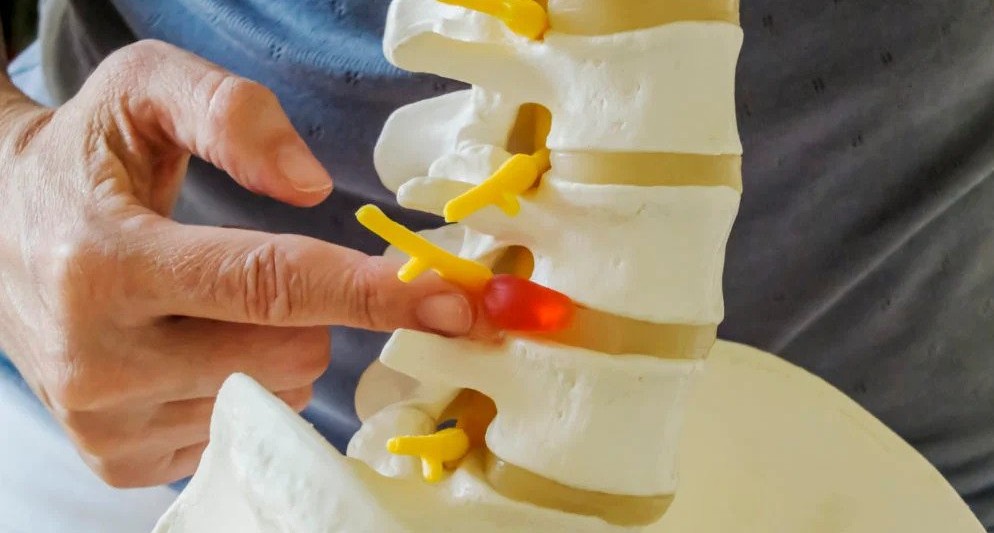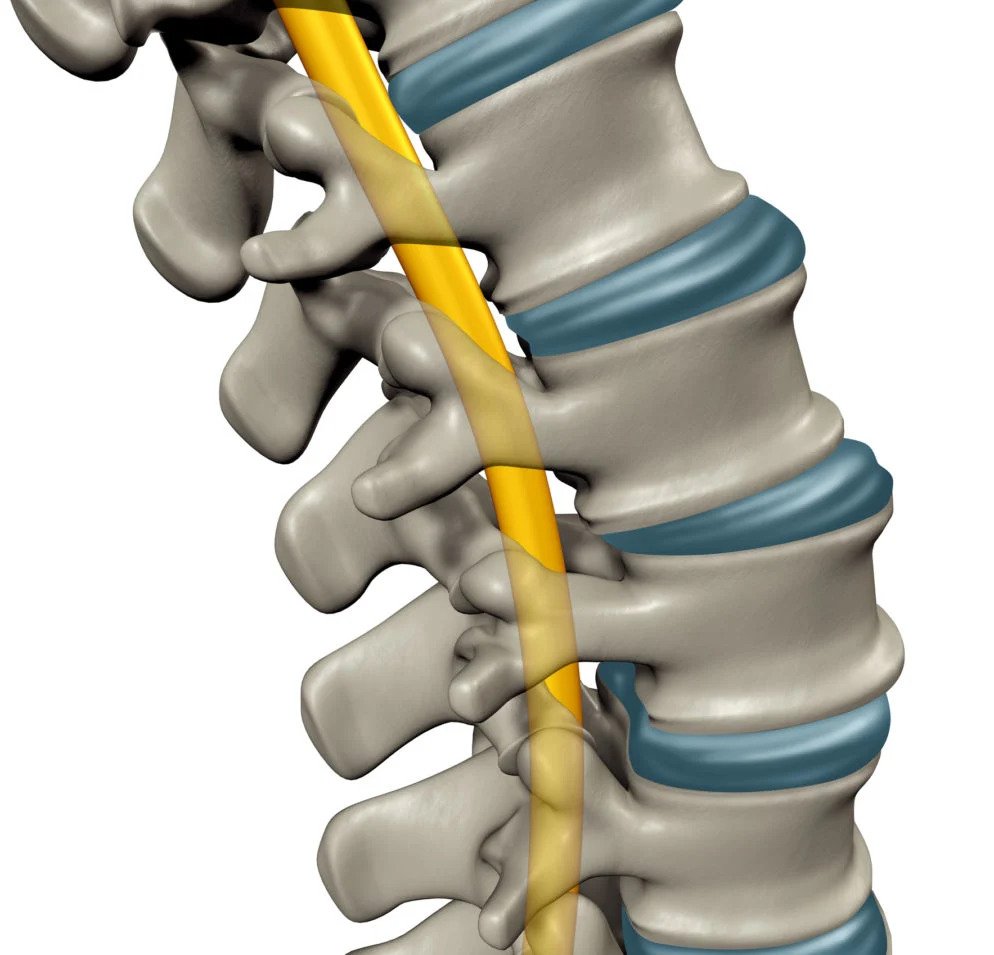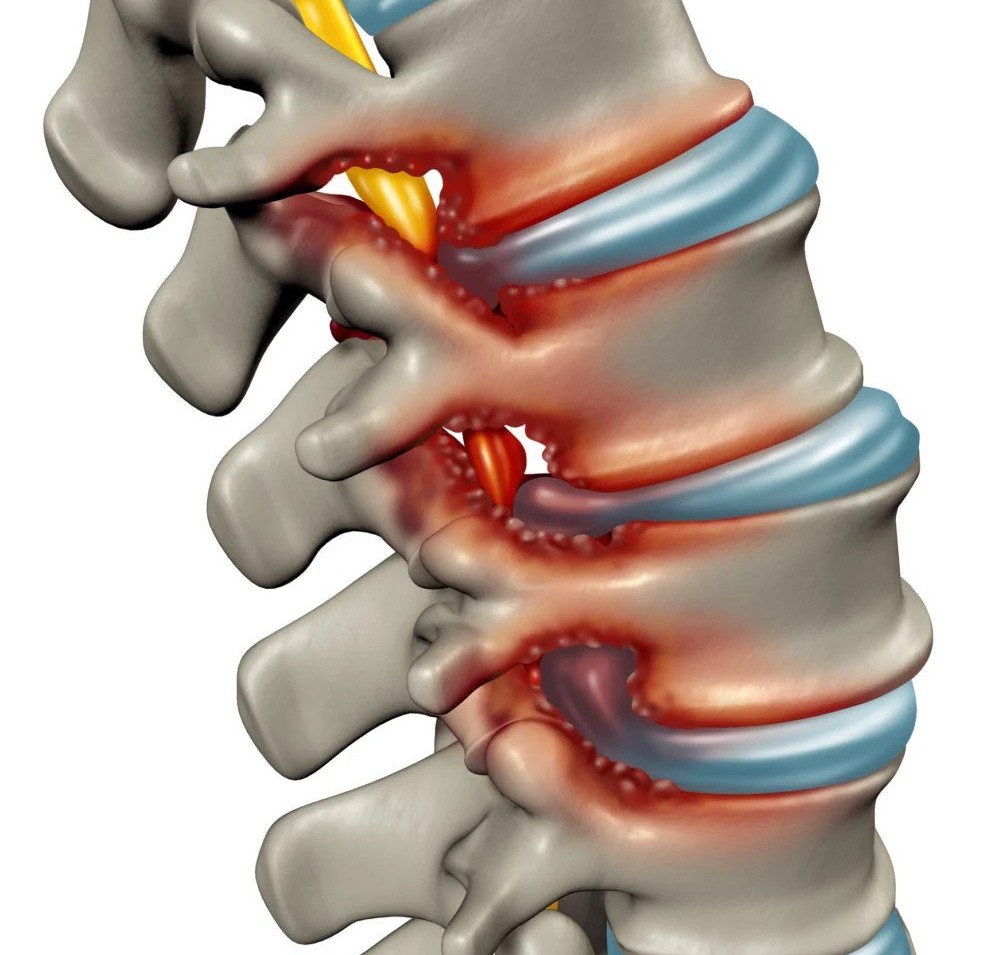
Endoscopic Spine Surgery: An Alternative to Lumbar Spinal Fusion?
By: ScopeSpine
A common cause for missed days at work or a trip to the emergency room is the intense back and leg pain that comes from a pinched nerve in the lower back. How does this happen? What are the treatment options?
The key to understanding what causes a pinched nerve is to review how the spine functions. When nerves travel down from the brain they pass through a tunnel called the spinal canal. As nerves travel through the spinal canal, they also pass near spinal discs. Spinal discs are jelly-like shock-absorbers that separate each of the bones in the lower back, these bones are called vertebrae. Our ability to bend and twist are made possible by these important structures. Back and leg pain typically occurs when nerves are compressed within the spinal canal or by spinal discs.
Several common spinal problems are listed below:
1. Lumbar Disc Herniation
Lumbar Disc Herniation occurs when a spinal disc bulges backward, the pressure that results from this causes back pain. When this material presses on a nerve, it causes leg pain or leg weakness. The model below of the lower back shows a herniated disk (red) pressing on a nerve (yellow).

2. Lumbar Stenosis
Lumbar Stenosis occurs when the spinal canal becomes narrow. There are many causes, but one cause is from the development of arthritis. As arthritis progresses, spinal joints enlarge, discs can bulge, and the bone spurs that form will tighten the space within the spinal canal – limiting space for nerves. This reduction in space results in leg pain (often in both legs) or a sense of heaviness in both legs.


3. Lumbar Spondylolisthesis
Lumbar Spondylolisthesis occurs when the vertebrae slip against one another. This shift in the spine will cause pressure on nerves, also resulting in back or leg pain. Some surgeons will refer to this as “instability.”
What are the treatment options for a spine problem?
Common spinal treatments include medications, physical therapy, and injections. The vast majority of people will recover with conservative and non-surgical treatments. In cases where the pain becomes persistent, some people choose to live with the pain, while others who have tried all options proceed with surgery.
What are the surgical options when conservative treatments fail?
There are many surgical options, all of which depend on the diagnosis: endoscopic surgery, microdiskectomy, laminectomy, disc replacement, and fusion surgery. Less invasive surgeries may reduce long-term damage to the spine. Larger procedures like spine fusions use rods, screws, and plates – this can reduce spinal motion. In the past, lumbar spinal fusions were done with large incisions and were quite painful. Today with minimally invasive spinal fusions – spinal fusions are less painful. Despite these advancements, less invasive fusions will still limit the function and range of motion of the spine.
Is a lumbar spine fusion necessary to treat back or leg pain when other options have failed?
The answer is No.
Over the past ten years, there has been a significant rise in the number of spinal fusions performed in the United States. A major reason for performing such a procedure is if the spine is unstable (also known as lumbar spondylolisthesis), for many patients these procedures have been very successful. Yet for other spinal conditions (just back pain), the outcomes for fusion surgery have been variable. In many cases, a patient that undergoes a lumbar fusion may require a follow up fusion within a few years.
Why do patients who undergo a spinal fusion need another fusion later?
There are many reasons for requiring a second operation. One reason for a second surgery is that the first surgery may not have fused completely, and the surgeon needs to redo the procedure. In other cases, another part of the spine may get worse requiring a fusion at a different spinal level.
These multiple operations are not only costly, but also stressful for many patients. Many patients feel that functionally there was no benefit to these procedures. Some patients resort to spinal injections, spinal cord stimulators, or pain pumps to deal with the pain after a failed lumbar fusion.
Is Robotic and CT Navigation Fusion Surgery the answer?
There has been an increased interest in less invasive fusions. Some fusions are now performed using robots or CT navigation allowing for fusions to be performed through smaller incisions – leading to faster recoveries. Yet despite these advancements, the fact remains that many patients may not need a lumbar fusion at all. In many cases, a surgeon can avoid a fusion by simply removing bone spurs – thereby reducing the pressure on a single nerve. A small procedure like this may not fix everything, but it is enough to relieve the pain in many cases.
Dr. Zahir adds:
Is endoscopic spine surgery a possible option for patients with back and leg pain who want to avoid a fusion?
The answer is Yes.
Endoscopic spine surgery precisely targets the part of the spine that causes pain (especially leg pain) by removing bone spurs and disc herniations through the least invasive methods possible. Although endoscopics is a great option for many patients, the surgical decision-making is sometimes the most difficult.
For a person suffering from back and leg pain who is considering spinal fusion surgery, one should consider a second opinion. Some people might be eligible candidates for a less invasive option like endoscopic spine surgery. Before considering endoscopics, a comprehensive physical examination, review of the patient’s past history, MRI, and Xrays are required.
Less is more. There is no turning back after a spine fusion.
When a patient undergoes a lumbar fusion procedure, the outcomes are often irreversible.

Usman Zahir, MD
Dr. Zahir is a leading expert on endoscopic spine surgery. In addition to endoscopic spine surgery, he also performs traditional minimally invasive spinal procedures. His goal with every patient is to choose the best procedure for each individual patient’s situation. Dr. Zahir is an instructor of endoscopics and continues to train surgeons from around North America. Dr. Zahir is in-network with most insurances. To learn more about endoscopic spine surgery, please visit: https://www.scopespine.com/



